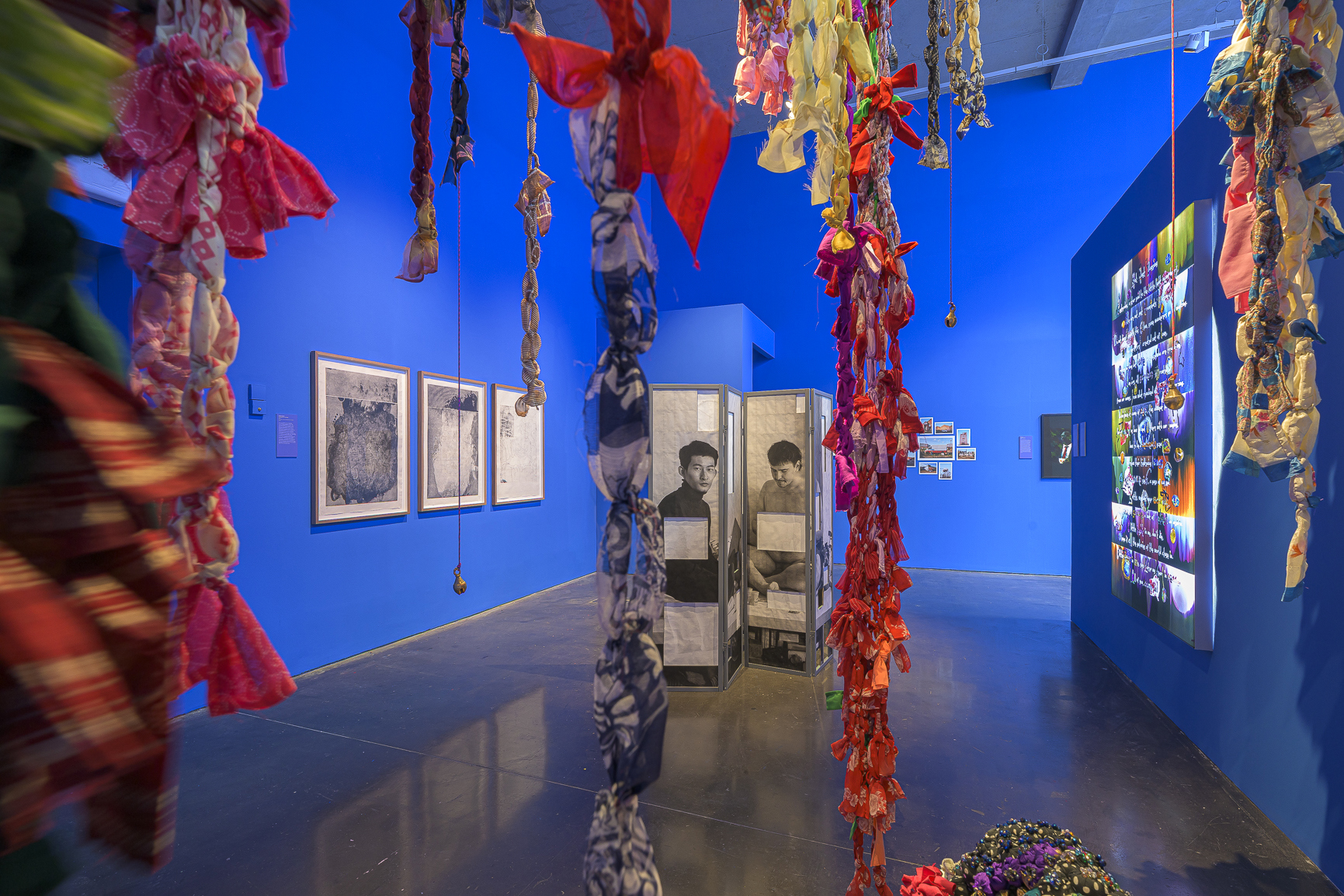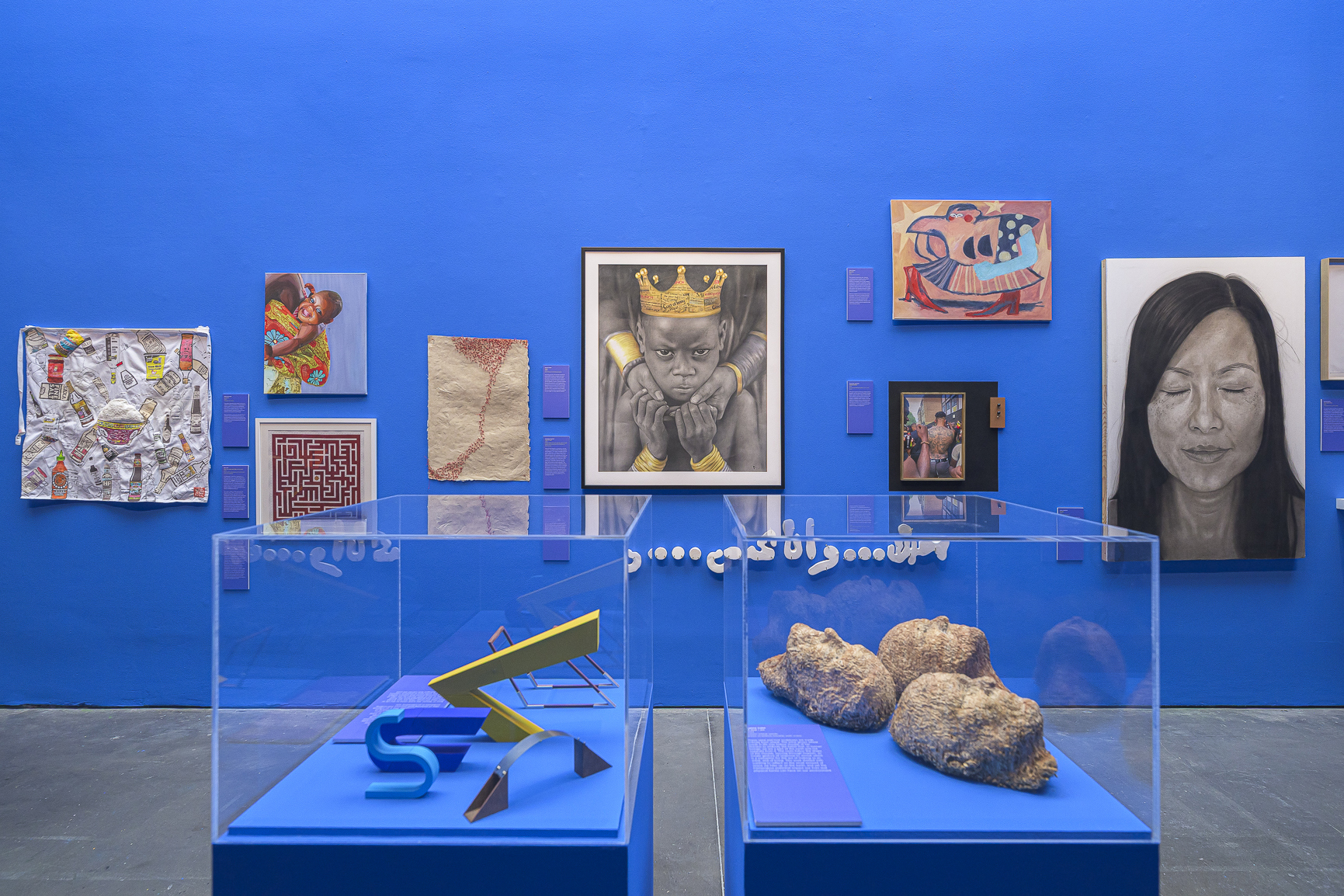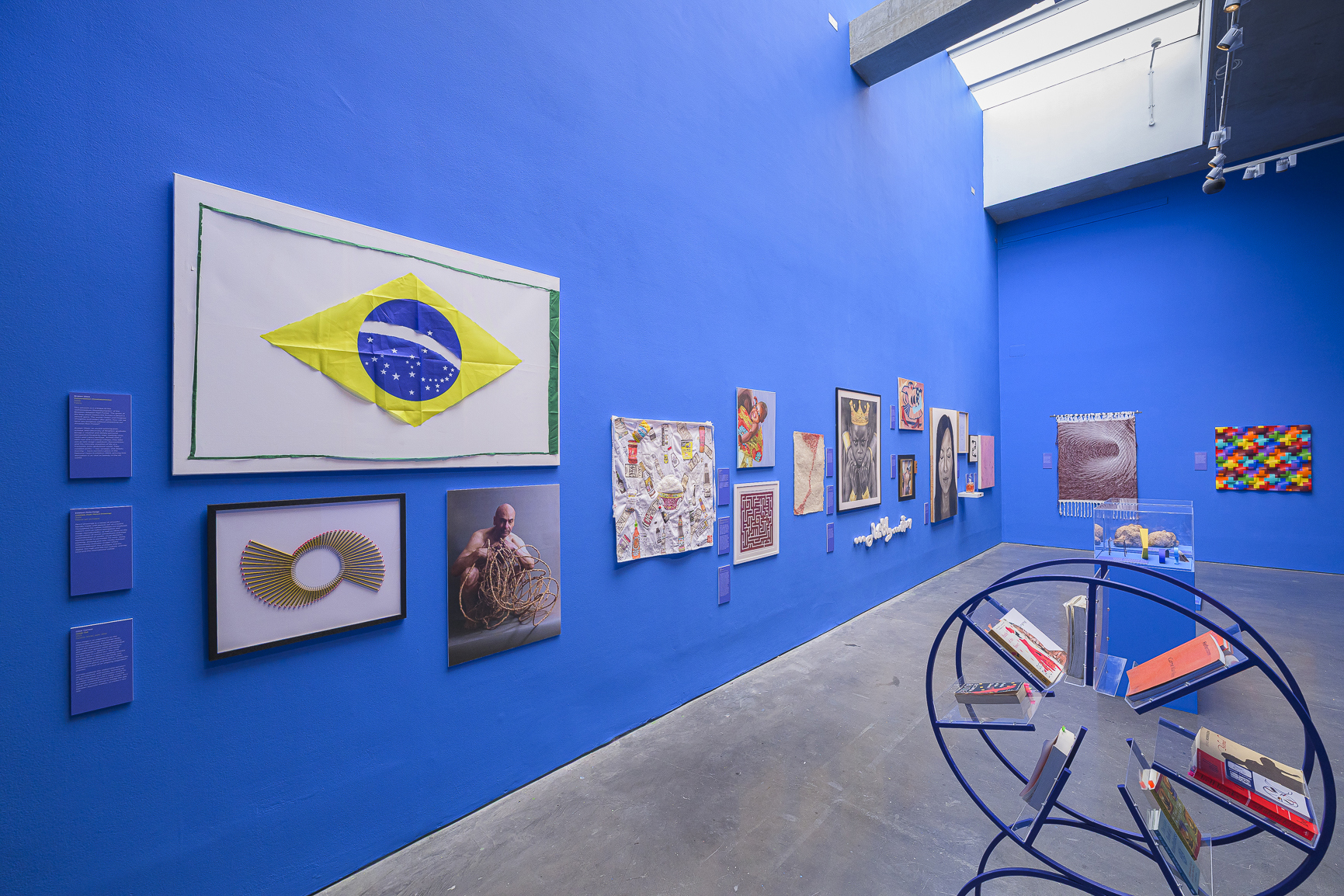How do you capture and represent the vast talent of artists across the UK? How can an organisation elevate this work, highlight key themes, and further its own mission in the process? At its core, the New Art Exchange Open Exhibition provides answers to these questions.

Stepping into the NAE Open is a vivid celebration of mixed-media practice: colour alongside monochrome, sculpture adjacent to photography, all framed within the calming blue interiors of the gallery. The exhibition not only showcases remarkable technical skill and creativity but creates connections between personal stories and broader conversations around society and history.
Hosted by the UK’s largest gallery dedicated to the contemporary visual arts of the Global Ethnic Majority*, this is the fifth edition of NAE Open. It serves as both a public exhibition and a professional development platform for Global Ethnic Majority artists across the UK, as well as all artists based in Nottinghamshire.
Each year, the NAE Open offers a high‑profile showcase for contemporary artists whose work cuts across painting, video, live art, photography, textiles and sculpture. Selected through a competitive open-call process, the exhibition brings together artists at various career stages, all selected by a diverse panel of neighbours, artists, and curators. The result is a bold, thought-provoking collection that reflects personal narratives of migration, identity, belonging, culture, politics and place.
From deeply personal experiences to urgent global crises, NAE Open captures a wide scope of themes while amplifying voices too often excluded from mainstream discourse
The NAE Open aligns closely with NAE’s mission to nurture talent from Global Ethnic Majority communities, connect them globally and encourage cross-cultural dialogue. It responds to local and national need for more inclusive creative platforms, actively promoting diversity and representation within the creative industries.
Among the wide variety of works on display at this year’s NAE Open, several pieces stand out for their emotional power, socio-political relevance, and level of craft.
One of the most arresting is Deforestation (Desmatamento) by poet and scholar Broken Glass. A section of the Brazilian flag has been violently cut, leaving only negative space where green once symbolised the forests. The national motto - “Order and Progress” - has also been removed, prompting the question: How can we have progress without protecting the Amazon? The flag, reduced to fragments, becomes a sharp critique of environmental destruction and the erasure of Brazil’s ecological identity. Inspired by luggage arriving at Kathmandu International Airport and shaped by Broken Glass’s Latinx heritage and working-class roots, the work exemplifies disruption as a form of beauty and resistance.

Wider themes around artistic identity and economic survival emerge in Capitalist Champion by Mamu Umu, part of his ongoing series Who Gets to Be Me? The portrait shows a suited figure holding a stereotypical “British” mug, symbolising the conflict between creative passion and societal expectation. In a climate where the cost of living soars and resources for artists remain scarce, Umu’s work feels urgent. It captures the internal tug-of-war familiar to many creatives: do we follow our passion or conform to the pressures and restrictions of capitalism?
Emily Catherine’s Phuong offers a quiet counterpoint. Her photorealistic charcoal portrait - part of the series Here With You - depicts a subject with closed eyes, inviting viewers to pause, breathe, and reflect. Surrounded by louder, more colourful works, the calm stillness of Catherine’s drawing cuts through the noise. It is a tribute to empathy, to the overlooked and unseen. Catherine continues to affirm her place as one of Nottingham’s most gifted artists.
Aida Wilde’s BUTCHERED is arguably one of the most powerful works in the exhibition. A white body bag hangs from red carcass hooks, a printed label assigning the “diagnosis” as genocide, the “location” as Palestine. Screen-printed with capitalised words—“GAZA /MASSACRE–POLITICAL / RACIAL / ECONOMICAL / BIOLOGICAL [GENOCIDAL]–WARFARE”—the piece forces viewers to confront the clinical coldness of state violence. Inspired by a 1987 Keith Haring T-shirt that read “AIDS is Political–Biological–Social (Germ) Warfare,” Wilde’s work links contemporary atrocity with historical marginalisation. By placing a body bag in a gallery, she pulls the violence off our screens and into physical space. It is raw, direct, and unforgettable.

The exhibition, as a whole, is rich with craft, meaning, and boldness.
A companion to Wilde’s piece is Three Brits by Akshay Ramsewak. A triptych of portraits defaced with slurs and red spray paint, the work delivers a visceral commentary on the racism immigrants continue to face in the UK. The words are confronting, but necessary. Shock becomes the entry point to reflection.
Even more telling is that Ramsewak, while still in secondary school, was prevented from exhibiting the piece due to the language used. This censorship highlights the institutional discomfort that often surrounds direct expressions of racial trauma. That such a young artist is producing work of this calibre is both moving and urgent.
The exhibition, as a whole, is rich with craft, meaning, and boldness. From deeply personal experiences to urgent global crises, NAE Open captures a wide scope of themes while amplifying voices too often excluded from mainstream discourse. That the works are so varied - across media, tone, and message – makes their collective impact all the more powerful. This isn’t just an exhibition. It’s a testament to what can happen when an institution commits to truth, justice, and representation through art.
*NAE uses the term “Global Ethnic Majority” to describe individuals who are Black, Asian, Brown, dual heritage, Indigenous to the global south, and/or racialised as ethnic minorities.
The New Art Exchange Open runs until 13 September 2025, with free entry.
We have a favour to ask
LeftLion is Nottingham’s meeting point for information about what’s going on in our city, from the established organisations to the grassroots. We want to keep what we do free to all to access, but increasingly we are relying on revenue from our readers to continue. Can you spare a few quid each month to support us?




